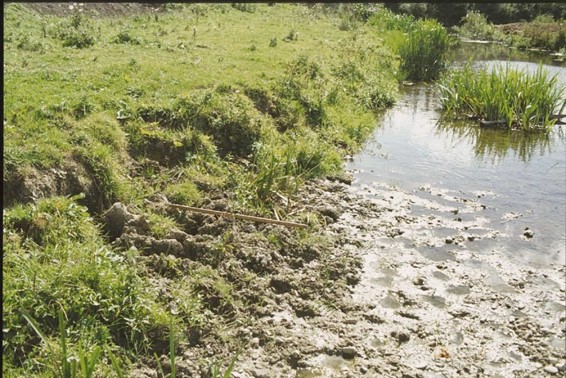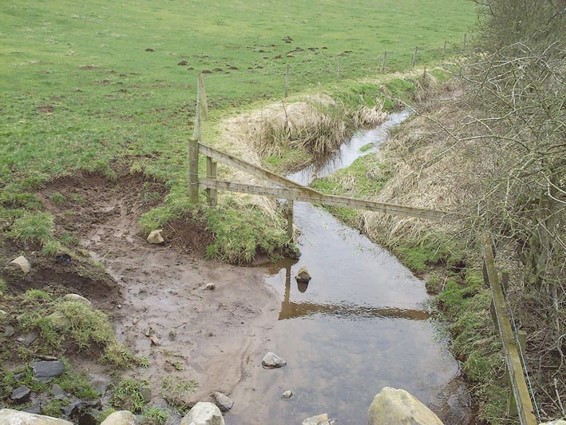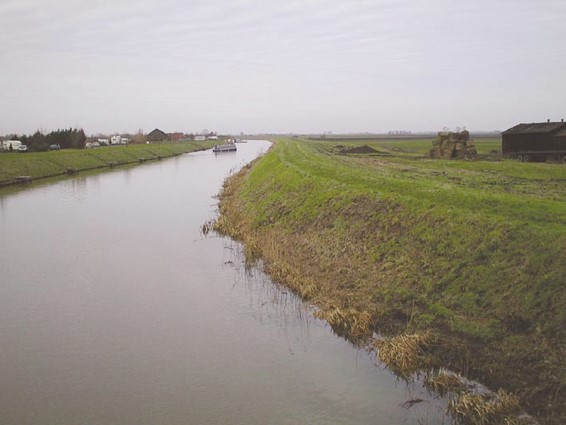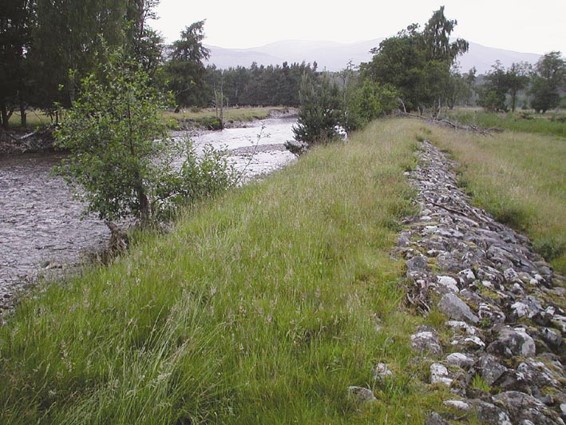Bank Modification
SECTION G: PHYSICAL ATTRIBUTES – BANK MODIFICATION(S)
Boxes are NOT emboldened, so more than one entry per box is permissible (e.g. if the bank is poached with some top reinforcement, enter PC/RI).
Not known (NK)
If you are unsure whether or not a bank has been modified, record NK. You can consult river management records to assess if the reach has been previously engineered. If so, make additional notes. Enter ‘NK’ for spot-checks in culverts.
None (NO)
No obvious modifications visible. It may be that subtle changes are missed at a site on the first spot-checks, but later ones show clearer signs of modification. Under such circumstances, modifying earlier spot-check records is permissible if, on closer subsequent inspection, signs are evident. To do so, review spot-checks whilst completing the sweep-up on the return leg of the survey.
Reinforced bank (RI)
Whole or part of bank artificially strengthened for bank protection purposes. Examples include concrete, sheet piling, corrugated iron, wood piling, gabion, brick/laid stone, rip-rap, and if clearly for bank reinforcement purposes, tipped debris (see Bank Material descriptions).
Poached bank (PC)
Bank significantly trampled or puddled by livestock. Includes banks heavily trampled as a result of human activity such as picnic spots, canoe access points and fishing spots dug into the bank.
Add (B) after PC (i.e. PC(B)) if the bank is predominantly bare due to poaching i.e. <50% vegetation cover.


Examples of poached banks
Embanked (EM)
Artificial raising of bank. A variety of materials can be used, including earth, natural stone or walls of concrete or brick. Only recorded at a spot-check when it forms an integral part of the bank. Do not include embankments set back from the immediate banktop; these are accounted for in the ‘sweep-up’.


Examples of embankments
Note on bank modifications: if you are sure, beyond reasonable doubt, that there are no obvious signs of bank modification, then record ‘NO’ (none); if in doubt, record ‘NK’ (not known).